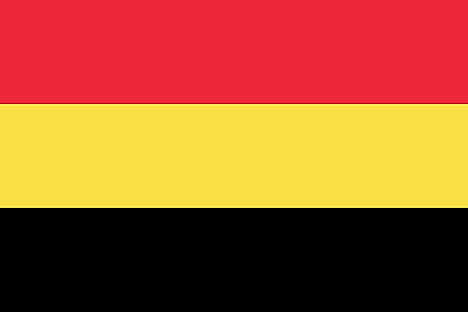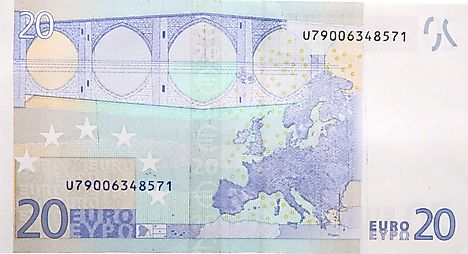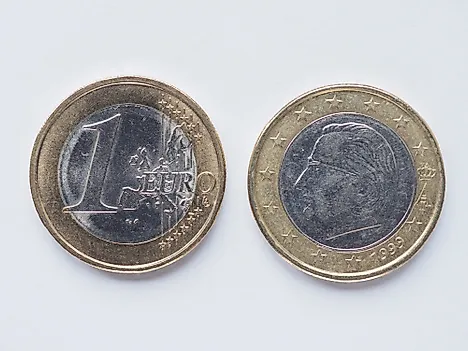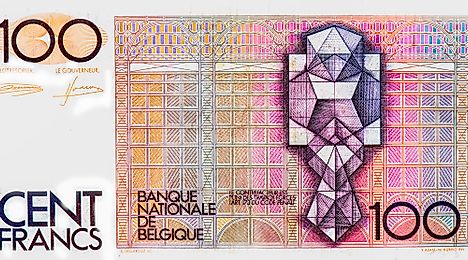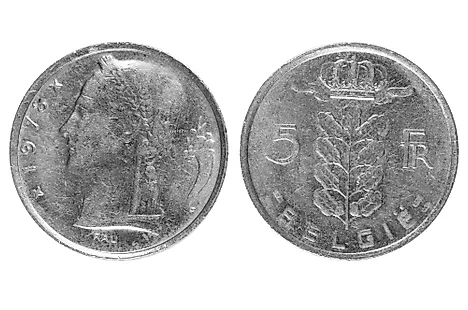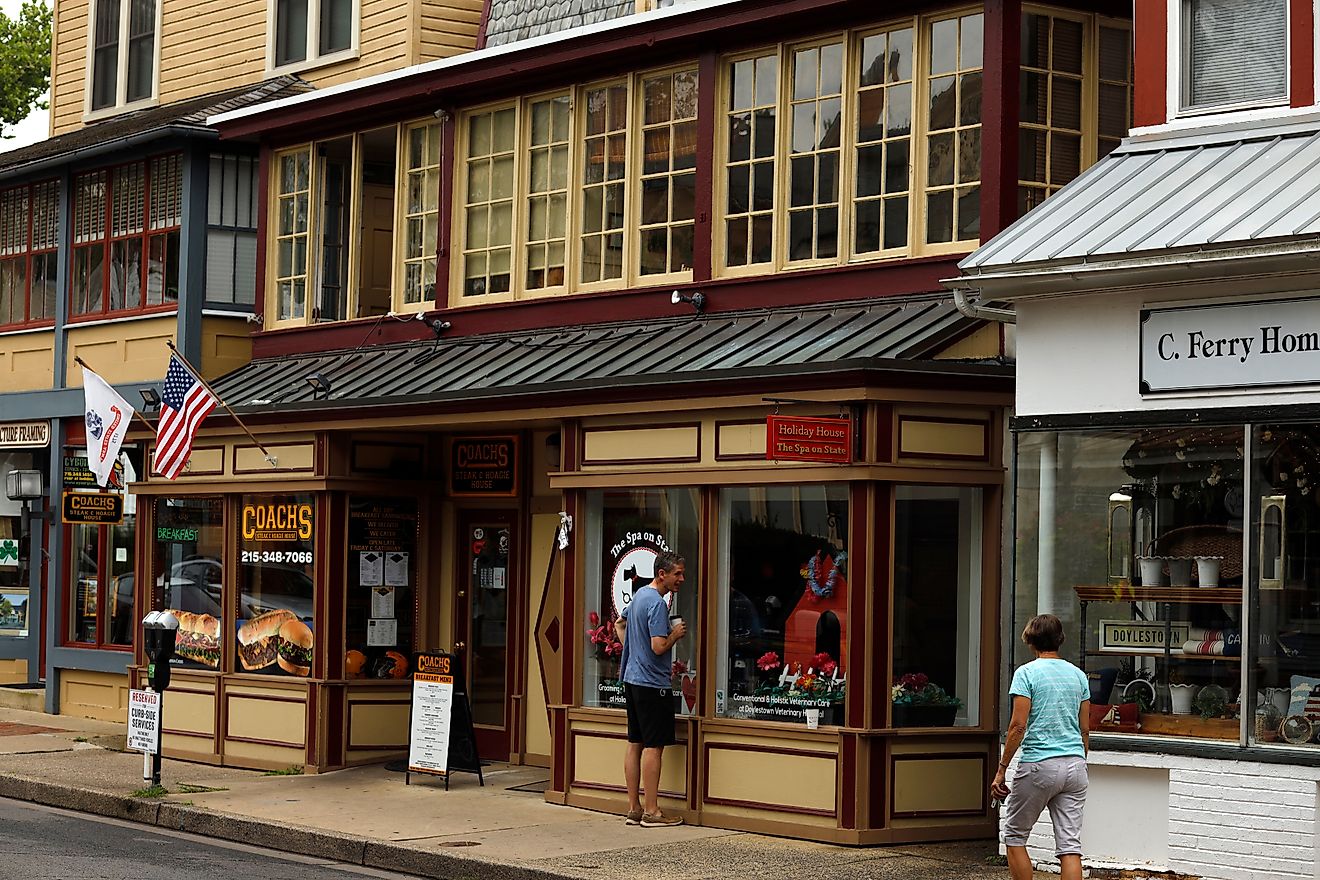Flags, Symbols & Currency of Belgium
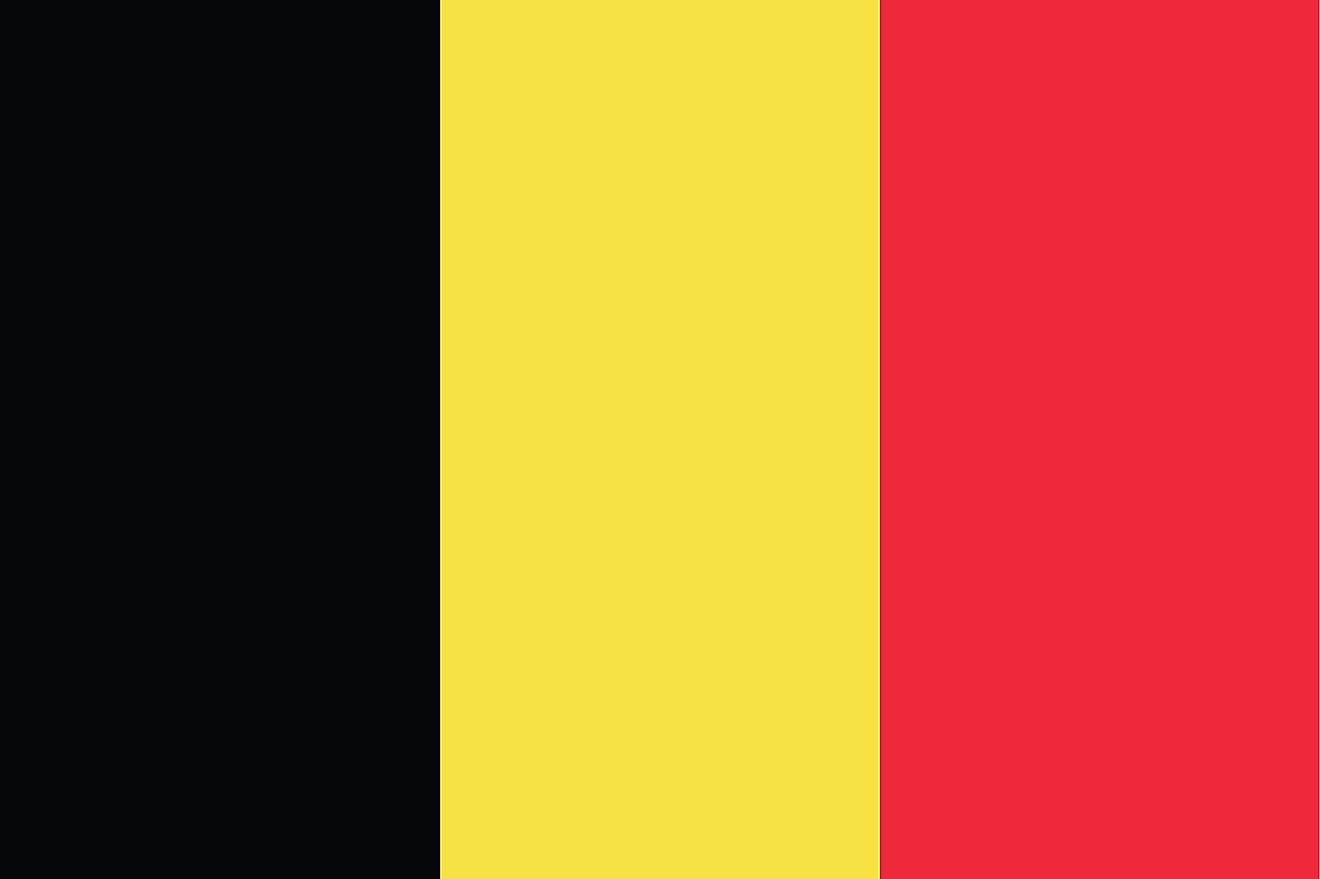
The National Flag of Belgium was officially adopted on January 23, 1831. The flag was designed to signify Belgium's recognition as an independent nation.
The tricolor flag consists of three equal vertical bands of black (hoist side), yellow, and red. The vertical design of the flag is taken from the French Tricolor. The Black, gold and red colors are symbolic of the country's coat of arms and were taken from the arms of the Duchy of Brabant. The red color represents the red lion of Hainaut, Limburg and Luxembourg; the yellow color represents the yellow lion of Brabant and the black color represents the black lion of Namur and Flanders. The flag has an unusual height: width proportions of 13:15.
History of the Belgian Flag
The French national tricolor was flown in the nation when Belgium was under the rule of France. The Belgian Revolution kicked off riots and replaced the French flag with a vertical flag bearing the colors red, black and yellow. This flag bore a resemblance with the flag used during the Brabant Revolution of the 18th century. The arrangement and design of this flag was changed subsequently and the current flag was adopted in 1831.
Symbols of Belgium
The National Coat of Arms of Belgium
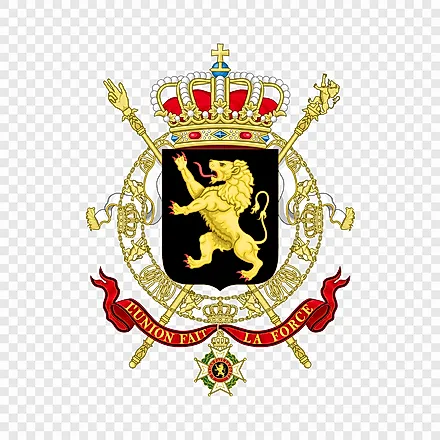
Belgium's coat of arms is comprised of a golden lion against a black shield, that has the royal crown resting on top, and the motto “L’union fait la forçe" (“Strength lies in unity”) inscribed in golden letters on a ribbon below. Directly behind the shield are crossed sceptres. The Belgian Lion (Leo Belgicus) is a yellow colored lion with red claws and a tongue featured against a black background.
National Motto
“L’union fait la forçe. Eendracht maakt macht. Einigkeit macht stark.” (“Strength lies in unity”)
National Anthem
- Anthem Title: “La Brabançonne” (“The Song of Brabant”)
- Music: François van Campenhout
- Lyrics: Louis-Alexandre Dechet (Jenneval)
- Date of Adoption: 1860
“La Brabançonne” (“The Song of Brabant”) is the national anthem of Belgium. Louis-Alexandre Dechet (Jenneval) – an actor wrote the original French lyrics during the Belgian Revolution and Victor Ceulemans translated the lyrics into Dutch. The music was composed by François van Campenhout. The national anthem was officially adopted in 1860.
“La Brabançonne” (French)
Noble Belgique, ô mère chérie,
À toi nos cœurs, à toi nos bras,
À toi notre sang, ô Patrie !
Nous le jurons tous, tu vivras !
Tu vivras toujours grande et belle
Et ton invincible unité
Aura pour devise immortelle :
Le Roi, la Loi, la Liberté !
“The Song of Brabant”
Noble Belgium; O, mother dear;
To you we stretch our hearts and arms,
With blood to spill for you, O fatherland!
We swear with one cry, you shall live!
You shall live, so great and beautiful,
And your invincible unity
Shall have for device immortal:
The King, the Law, the Liberty!
The Currency of Belgium is the Euro
The current official currency of Belgium is euro. Its symbol € was designed by Alain Billiet (a Belgian). The Є part represents the civilization in Europe and the initials letter of the name Europe while the lines on parallel ‘indicates’ the euro's stability.
The euro coins and banknotes were introduced in Belgium on January 1, 2002.
Coins
The smallest denomination is 100 cents and is called "euro cents". All the coins that are in circulation bear the same side with the value, a map, and a denomination inscribed. Due to the linguistic diversity of the Eurozone, the language used on the coins is Latin. Coins are also available in the following denominations: 1c, 2c, 5c, 10c, 20, 50c, €2. Coins bearing €2 on the face had entered the market with different features of nationally designed-coins. These coins were introduced to mark various commemorations - like, the 50th anniversary of Rome Treaty signing.
Banknotes
The euro banknotes carry the same designs on the two sides and was designed by Robert Kalina. The banknotes are issued in €5, €10, €20, 50, €100, € 200, and €500. Every note has a particular color representing artistic or architectural achievements in Europe. The bridges on the banknotes stand for the connection between the future and the European nations. Others features on the notes are gateways and windows.
Historical Currencies of Belgium
The conquest of most part of Western Europe by France under Napoleon led to the wide circulation of French franc. In Austrian Netherlands (now Belgium), the franc was replaced by kronenthaler. When the Kingdom of Netherlands was formed, the kronenthaler was further replaced by the Dutch guilder. In 1832, the Kingdom of Belgium adopted its own franc, after independence from the Kingdom of Netherlands. In 1865, the Latin Monetary Union was created by France, Belgium, Switzerland and Italy. In 1926, both France and Belgium experienced a depreciation and this led to the country’s withdrawl from the monetary union. The Belgian franc was subdivided into 100 centiem (Dutch), centimes (French) and Centime (German). It remained the currency of Belgium until 2002, when the euro was introduced into circulation.
